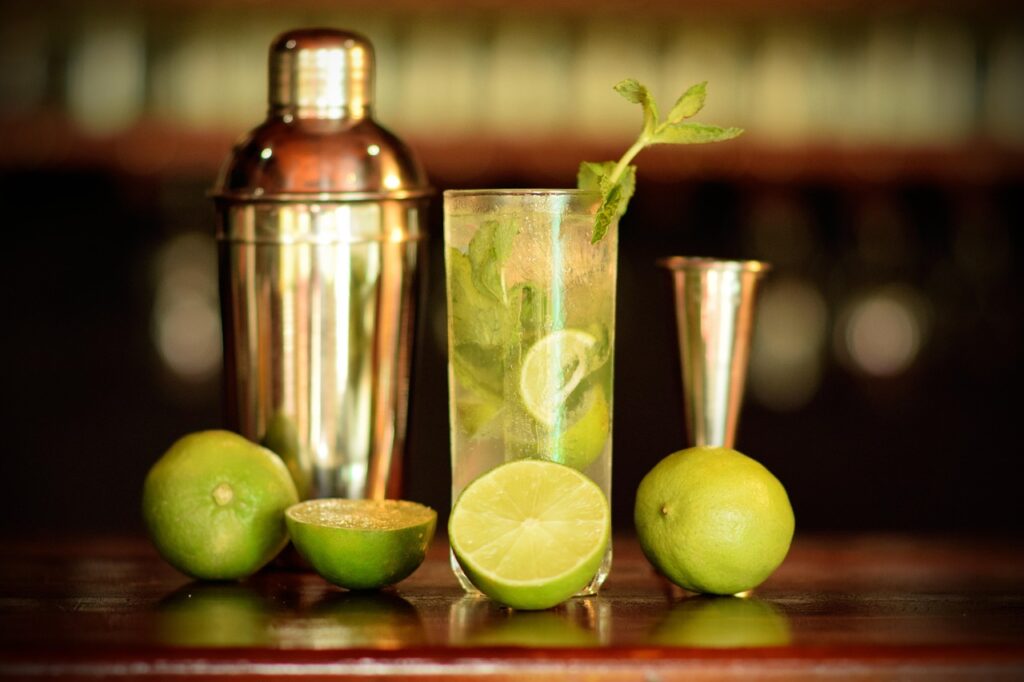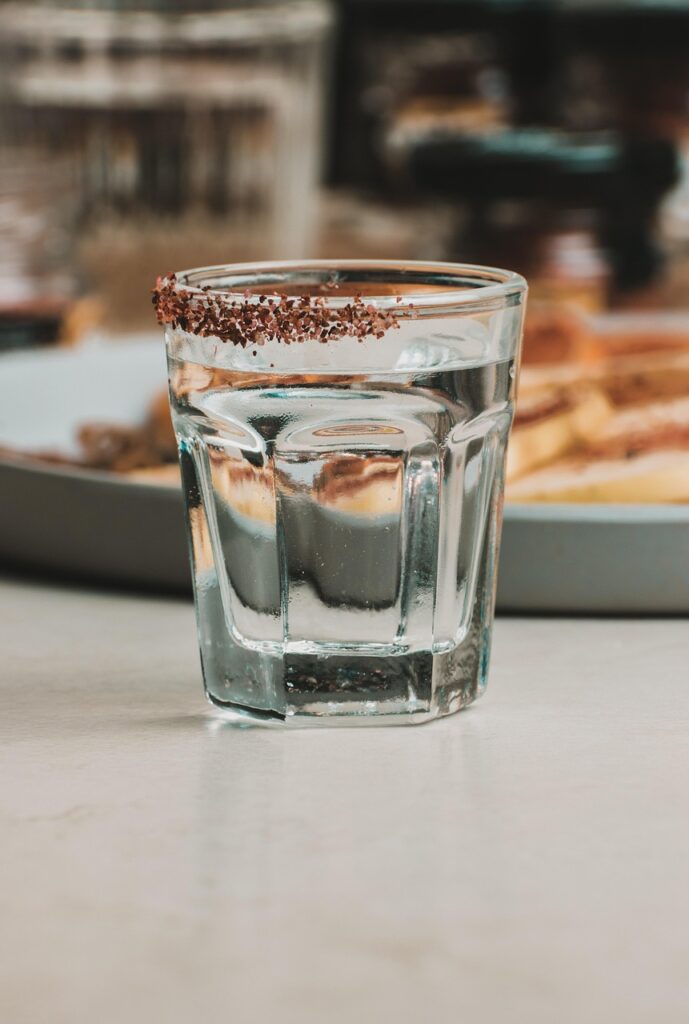
Bartenders are the unsung heroes of our nights out, effortlessly crafting liquid masterpieces while simultaneously managing a bustling crowd, all with a smile. They’re masters of their craft, blending spirits and keeping the good vibes flowing, but let’s be real – even the most seasoned pourer has a secret list of drinks that make their eyes roll faster than a shaker full of ice. We’ve all been there, confidently ordering our favorite concoction, completely unaware that we might be adding a tiny, silent groan to our bartender’s mental soundtrack.
It’s not about hating *you*, dear customer, it’s about the dance of a busy bar, the delicate balance of efficiency and artistry. Some drinks are just an absolute nightmare to whip up, especially when the bar is “packed-to-the-gills.” Others are surprisingly complex, require specific, hard-to-find ingredients, or simply gum up the works with their intricate preparation. We’ve gone behind the bar, chatted with industry vets, scoured social media, and yes, even peeked at Reddit threads, to bring you the unfiltered truth about the drinks that bartenders universally dread.
So, next time you’re out, armed with this newfound wisdom, you might just become your bartender’s favorite patron. Remember the human behind the bar and consider the context. A packed sports bar, for instance, might not be the ideal moment for a muddled masterpiece. Prepare to be surprised by some of your go-to orders – because we’re about to reveal the secrets bartenders don’t want you to find out!
1. **Mojito**The mojito is almost universally disliked by bartenders, and it’s not because they don’t appreciate a good refreshing drink. The core issue, as Jackson Strayer-Benton, Beverage Director for Hen of the Wood, Doc Ponds, and Prohibition Pig in Vermont, succinctly puts it, is that “The mojito is a mess to make.” This isn’t just about a little spillage; it involves extensive muddling of fresh mint leaves, which can be particularly cumbersome when a bar is overflowing with thirsty patrons.
During the happy hour rush, the process of smashing ice with a muddler if there isn’t an ice crusher at the venue “takes forever,” according to BuzzFeed community member genevieveh477793064. This manual labor, coupled with the need to handle delicate mint, significantly slows down service, creating bottlenecks when efficiency is paramount. Bartender Samantha Follows recalls the initial excitement of stocking fresh limes and a big bag of mint, but quickly noted that “once the club gets packed, it starts to be a bit of a hassle to muddle a mojito.”
Beyond the time-consuming muddling, mojitos also demand specific fresh ingredients that might not always be readily accessible or neatly organized in a bustling bar environment. Strayer-Benton advises, “The mojito is an easy cocktail to recreate at home using fresh mint from your garden or local market. Make it for your friends and family, but leave the mint at home when you go out to your favorite bar/restaurant and order something from their professionally crafted cocktail menu.” This highlights the distinction between a leisurely home preparation and the fast-paced demands of professional bartending, where every second counts.
The messy nature of a mojito’s preparation also adds to its notorious reputation. Mint leaves can end up everywhere, requiring extra clean-up, and the specific glassware adds another layer of minor inconvenience. It’s a delicious drink, no doubt, but its intricate steps and the potential for slowing down service make it a recurring target for a bartender’s exasperated sigh, especially when a wave of orders crashes down during peak hours.
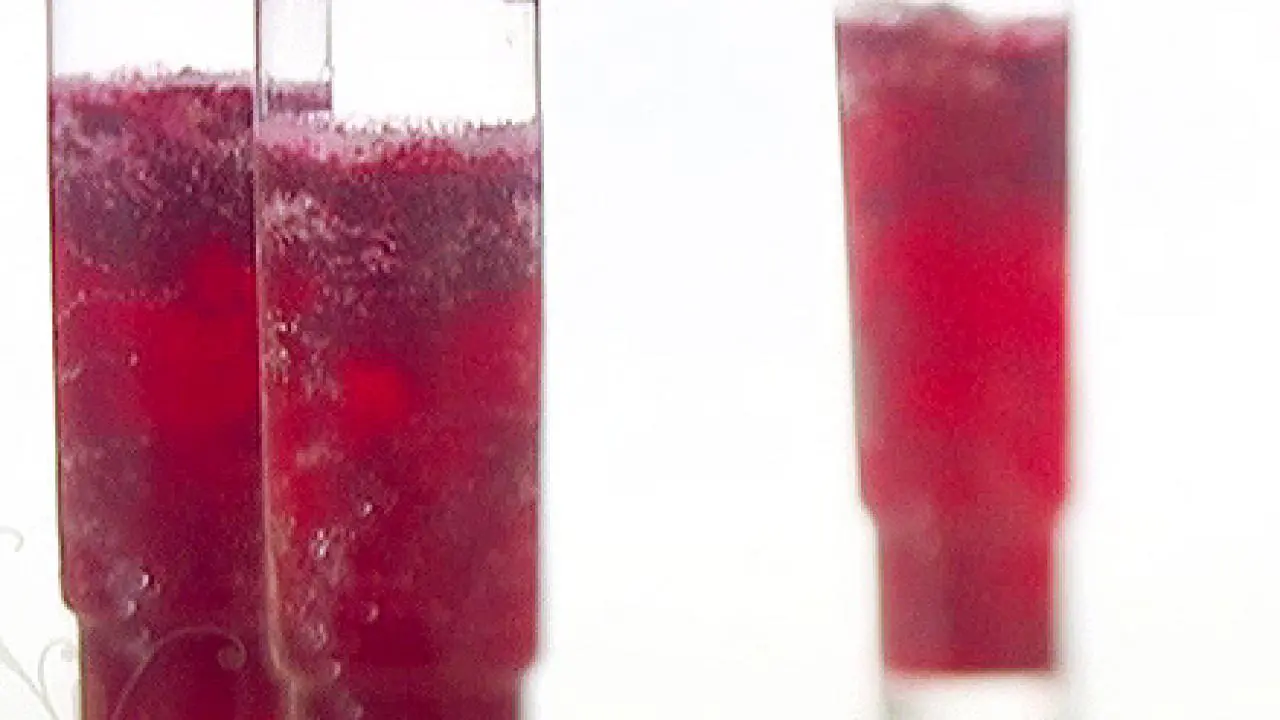
Blended Cherry Mojitos
Ingredients
Equipment
Method
- Place the frozen cherries, crushed ice, mint leaves, lime juice, rum, and simple syrup in a blender. Blend until smooth.
- Pour the mixture into chilled glasses and top with crushed ice. Garnish with lime wedges and cherries.
- Lime Simple Syrup
Notes
Read more about: The Hidden Truth Behind Energy Drinks: More Crash Than Boost
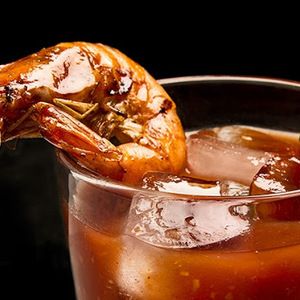
2. **Bloody Mary**Ah, the Bloody Mary. A brunch-time staple, a savory delight for many, but often a veritable “salad in a glass” for the person behind the bar. Laura Thompson, Bar Manager at Prohibition Pig in Vermont, openly states, “My least favorite is a Bloody Mary, especially after 5 p.m.” The timing is key here, as the pre-made mixes and garnishes for brunch are typically put away, making an off-hour order a real production.
The main gripe, according to bartenders, is the sheer volume of ingredients and the mess involved. As tickytackett from the BuzzFeed Community explains, “Bloody Marys have like seven ingredients, so they’re a huge pain to make per order.” These ingredients often include vodka, tomato juice, Worcestershire sauce, black pepper, celery salt, Tabasco, and lemon juice, each requiring a precise measurement and often a distinct preparation step.
The “salad in a glass” descriptor isn’t just a witty remark; it points to the extensive garnishes that frequently accompany a Bloody Mary, ranging from celery stalks and olives to pickles and even bacon. Thompson laments, “They are also a mess, and you have to dig out a bunch of garnishes you put away hours ago, and do an extra shaker clean. It just gums up the works when you are busy, you know?” This scramble for garnishes and the subsequent clean-up further contribute to its status as a high-effort, low-efficiency drink during busy periods.
Moreover, the modern Bloody Mary has evolved into a canvas for customization, which adds another layer of complexity. Luke Slater, founder of The Cask Connoisseur, notes, “It can sometimes be difficult to guess what a customer may like in their drink.” This means bartenders often have to engage in a back-and-forth with the customer to ascertain their exact preferences, further delaying service and adding to the mental load during a rush. It’s a delicious drink for the consumer, but a complex, time-consuming, and messy undertaking for the dedicated bartender.

The Ultimate Seafood Bloody Mary recipes
Ingredients
Equipment
Method
- Combine chopped yellow onion with 1 teaspoon of water in a blender and process until a fine paste forms.
- In a large bowl, whisk together the onion paste, tomato juice, Worcestershire sauce, hot sauce, celery salt, horseradish, sea salt, black pepper, clam juice, fresh lime juice, and fresh lemon juice.
- Pour the Bloody Mary mix through a fine-mesh strainer into a clean pitcher or container, pressing on the solids to extract all liquid. Chill the mix thoroughly for at least 2 hours.
- Lightly coat the head-on prawns with olive oil and a pinch of kosher salt.
- Heat a grill pan or skillet over medium-high heat. Grill the prawns for 1-2 minutes per side until they turn pink and are cooked through. Set aside to cool.
- Carefully shuck the raw oysters, keeping them on the half shell for presentation if desired.
- Fill highball glasses with ice.
- For each cocktail, pour 5 ounces of the chilled Bloody Mary mix and 2 ounces of vodka into a prepared glass. Stir gently to combine.
- Garnish each cocktail with one grilled prawn and one shucked raw oyster.
- Serve immediately and enjoy.
Notes
Read more about: 7 Minor Star Wars Characters You Totally Forgot About (But Shouldn’t)
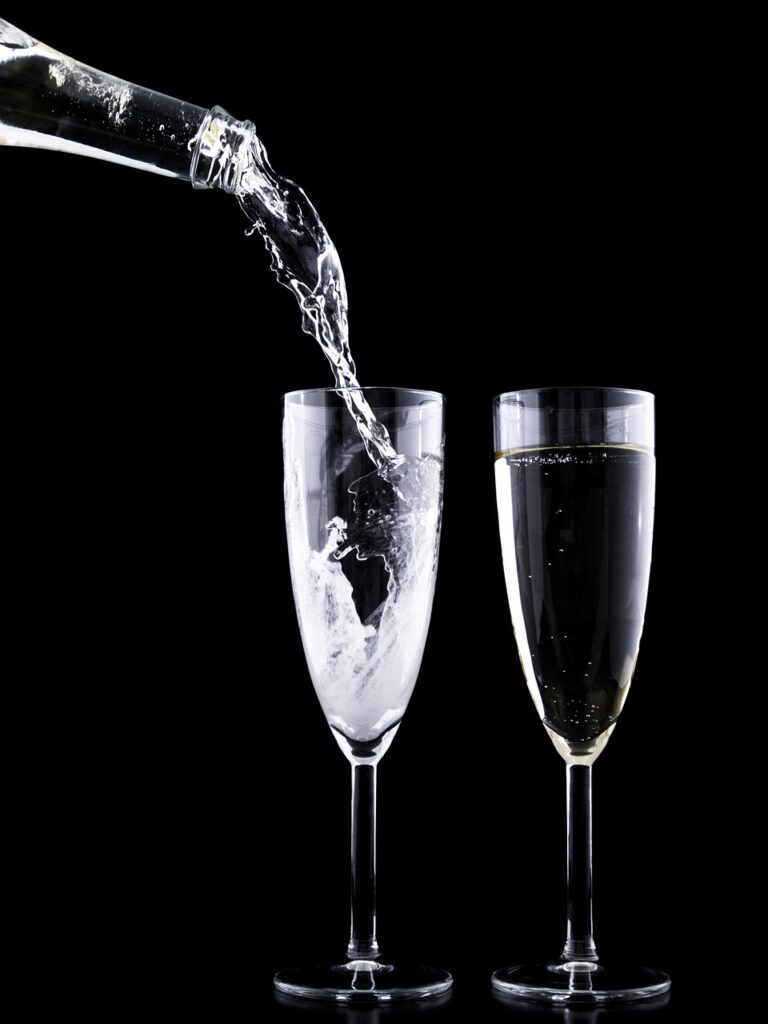
3. **Ramos Gin Fizz**If there’s one drink that consistently evokes a groan from behind the bar, it’s the Ramos Gin Fizz. This classic, though undeniably delicious, is frequently cited as the “most-loathed cocktail by bartenders.” The reason is simple: time and immense effort. David Mensch, owner of Spencer & Lynn Wine and Spirit Merchants in Connecticut, calls it an “old nemesis” and a “nightmare to see on a ticket.”
The preparation of a Ramos Gin Fizz is a true test of a bartender’s endurance and patience. It requires a lengthy list of ingredients—gin, lemon, lime, cream, egg white, orange blossom water, sugar, and soda—but the real kicker is the shaking. Josue Castillo, Beverage Director at Boston’s Next Door and Pazza on Porter, details the process: “The Ramos Gin Fizz involves a dry shake, then a shake with ice cubes and the shake must last until the ice is diluted.” This vigorous shaking can easily take “10 to 15 minutes to do correctly,” according to Mensch, including “around 8 minutes of dry shaking.”
Elissa Dunn, a mixologist and bar personality, compares making this drink to “cooking a delicate soufflé” and admits that while she doesn’t “hate” making it, it certainly “does make her sigh.” She emphasizes the non-negotiable shaking time: “You have to shake it for a really long time, you have to let it set, it usually takes, if you do not have a hand blender, somewhere around 12 minutes.” This means a bartender is tethered to a single drink for an extended period, unable to multitask, which is a major disruption during busy service.
The settling time after pouring is another crucial, time-consuming step. Castillo explains, “After you pour the drink into its glass, you must let it settle so that when you add the soda water, the drink will foam up more and then you need even more time for the drink to settle again.” This laborious, multi-stage process, combined with its creamy, egg-white texture, makes the Ramos Gin Fizz a beautiful, indulgent drink for the customer, but a formidable challenge for even the most dedicated bartender, making it a truly “soul-crushingly boring” task during a rush.
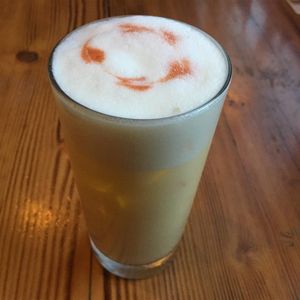
Ramos Gin Fizz
Ingredients
Equipment
Method
- Combine gin, half-and-half, lemon juice, lime juice, white sugar, egg white, orange flower water, and vanilla extract in a cocktail shaker.
- Perform a “dry shake” by shaking vigorously without ice for at least 60-90 seconds to fully emulsify the egg white and create a rich, frothy base.
- Add 1.5 cups of ice to the shaker.
- Perform a “wet shake” by shaking vigorously again for another 30-60 seconds until the mixture is thoroughly chilled and further aerated.
- Strain the mixture into a chilled highball glass.
- Slowly top the drink with 1 fluid ounce of very cold club soda, or as needed, allowing the iconic frothy head to rise generously above the rim of the glass.
- Serve immediately to enjoy its unique texture and flavor.
Notes
Read more about: Hold My Beer: These 14 Cars Went From Automotive Icons to Total Cringe Fails and We’re Not Sorry

4. **Moscow Mule**The Moscow Mule, a simple mix of vodka, ginger beer, ice, and lime, might seem innocuous enough, but it carries a surprising amount of baggage for bartenders. One of the primary frustrations stems from its traditional serving vessel: the copper mug. As the context points out, “it is supposed to also be served in a particular copper cup, which no bartender wants to dig out and clean.” This isn’t just about aesthetics; it’s about the practical inconvenience of locating, cleaning, and managing specialized glassware, especially when standard glasses are far more efficient.
Beyond the copper mug, some bartenders simply aren’t impressed with the drink itself. David Kravitz, beverage director at The Smith in New York City, remarkably told Thrillist that “the drink is just not very good.” He elaborated on his view, stating, “The vodka does nothing to enhance the ginger beer other than add alcohol. A great cocktail is about a spirit and its blending components becoming more than the sum of its parts.” This critique highlights a mixologist’s pride in crafting balanced, synergistic drinks, which the Moscow Mule, in its basic form, often fails to deliver.
Anthony Pullen, a mixologist and director of business development at Lyre’s Spirit Co., adds another layer to the dislike, suggesting that Moscow Mules “often aren’t good because they are tend to be made with lower-quality, high-sugar ginger beer.” This points to an issue with ingredient quality, where the standard bar offering might not live up to a discerning palate. If a drink relies heavily on a single mixer, the quality of that mixer becomes paramount, and a subpar ginger beer can undermine the entire drink.
The advice given is telling: “Order a Moscow Mule if it’s on a special drink menu and you know what kind of ginger beer is being used.” This implies that without a specific, high-quality ginger beer or a unique twist, the Moscow Mule is often a bland, uninspired order that adds to the general workload without providing much creative satisfaction for the bartender. It’s a testament to how even seemingly simple drinks can become a source of frustration due to presentation demands and perceived lack of quality.
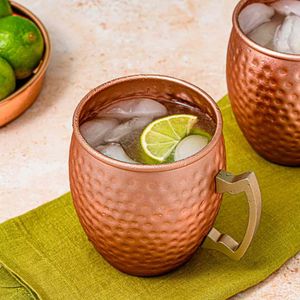
Moscow Mule Recipe
Ingredients
Equipment
Method
- Squeeze half a lime to yield fresh lime juice, reserving a wedge for garnish.
- Fill a copper mug generously with ice cubes.
- Measure and pour 2 ounces of vodka into the ice-filled mug.
- Add the fresh lime juice to the mug.
- Top the mixture with 4 to 6 ounces of chilled ginger beer, adjusting to your preference for spice and sweetness.
- Gently stir the ingredients with a bar spoon to combine, ensuring not to over-agitate the carbonation.
- Garnish the rim of the mug with the reserved lime wedge or a lime wheel.
- Serve immediately and enjoy the refreshing Moscow Mule.
Notes
Read more about: Nearly a Decade Behind the Scenes at Longhorn Steakhouse: Secrets, Hacks, and What I Learned
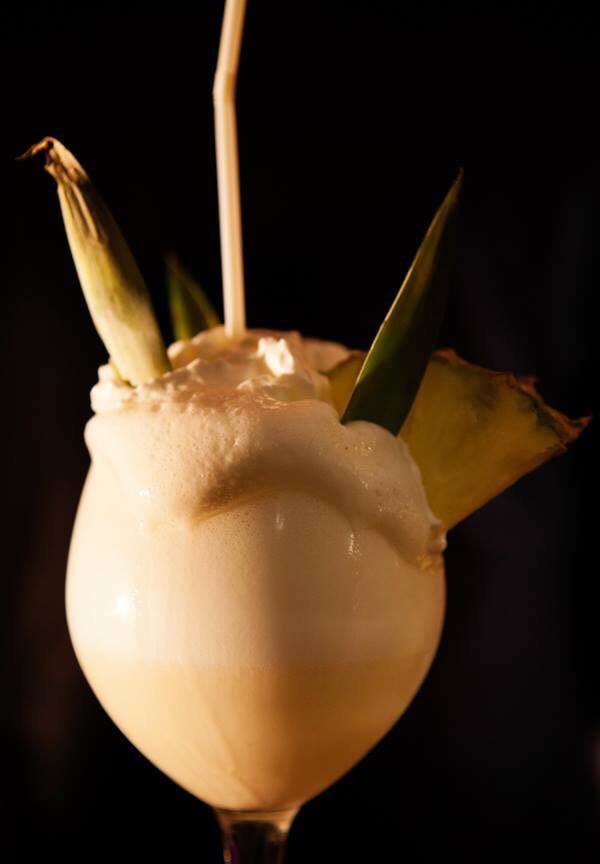
5. **Piña Colada**Frozen drinks, in general, are a source of considerable frustration for bartenders, and the Piña Colada is arguably the queen of this category. Joe Isidori, Michelin star chef and founder of Arthur & Son’s Restaurant in NYC, doesn’t mince words: “Bartenders hate making pina coladas.” His reasoning is straightforward and highlights several common grievances.
Firstly, the sweetness is a major factor. Isidori describes them as “Too sweet,” and mentions they are “typically reserved for tourists.” This suggests a perception among bartenders that Piña Coladas cater to a less sophisticated palate, potentially implying they are not ‘serious’ cocktails. The high sugar content is also a common complaint, with Carolina Gonzalez, Beverage Manager/Mixologist for WoodWind in Chicago, expressing a general dislike for “high sugar content” in drinks like the chocolate martini, as it “disallows a guest to enjoy or appreciate another cocktail after.”
However, the real point of contention, the one that makes bartenders “God forbid you want one frozen in a blender,” as Isidori dramatically puts it, is the use of a blender. As atiberi from the BuzzFeed Community states, “Those. Damn. Piña. Coladas. Honestly, most frozen drinks are annoying to make.” Blenders are noisy, take up valuable counter space, and require thorough cleaning after each use, all of which disrupt the flow of a busy bar. When the bar is “overflowing with people,” a blended drink order is a significant time sink.
Isidori’s personal confession, “I love pina coladas!” perfectly encapsulates the bartender’s dilemma: they might enjoy consuming the drink themselves, but the labor and disruption involved in making it for others, especially during a rush, is a different story entirely. The advice is clear: “Save the frozen drinks for a vacation spot where they’re already blended and ready to drink,” meaning places where they are pre-batched and designed for high-volume, quick service, not an artisanal cocktail bar.
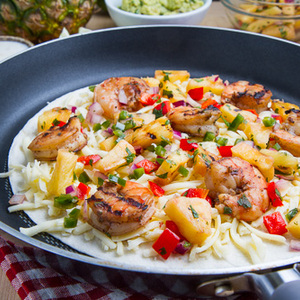
Jerk Shrimp and Pineapple Salsa Quesadillas with Pina Colada Guacamole
Ingredients
Equipment
Method
- Gather all prepared ingredients: tortillas, shredded cheese, grilled jerk shrimp, grilled pineapple salsa, and optional guacamole/crema.
- Lightly grease a non-stick skillet or griddle and preheat over medium heat.
- Lay one tortilla flat on a clean surface or cutting board.
- Evenly sprinkle half of the shredded Monterey Jack cheese over the tortilla.
- Distribute half of the grilled jerk shrimp and grilled pineapple salsa over the cheese layer.
- Top with the remaining half of the shredded cheese, then place the second tortilla on top.
- Carefully transfer the assembled quesadilla to the preheated skillet. Cook for 2-4 minutes per side, or until golden brown and the cheese is thoroughly melted.
- Remove the quesadilla from the skillet and let it rest on a cutting board for a minute.
- Slice the quesadilla into wedges using a sharp knife or pizza cutter.
- Serve immediately, accompanied by the optional pina colada guacamole and crema.
Notes
Read more about: Unlock Snacktime Success: 14 Easy & Nutritious Ideas for Every Kid (and Parent!)

6. **Dirty Vodka Martini**The Dirty Vodka Martini is a drink that elicits strong opinions, particularly from mixologists who pride themselves on balance and flavor profiles. John Ware, Mixologist and Spirits Director of Forsythia in NYC, is unequivocally “ready for the reign of the dirty vodka to end.” His primary critique is a fundamental one: “I have never thought any version of this drink tastes good. It’s unbalanced at its core, and the vodka and the brine often bring out the worst in each other.”
Ware’s sentiments highlight a professional frustration when asked to craft a drink that, to their trained palate, is inherently flawed. While he maintains professionalism, stating, “I’ll make them with a smile,” he clarifies his personal stance: “I prefer cocktails I can stand behind 100%. The DVM will never be it.” This reveals the conflict between customer preference and a bartender’s artistic integrity and commitment to quality. When a drink fundamentally clashes with their understanding of good mixology, it becomes a less satisfying creation to pour.
The specific combination of vodka and olive brine is what Ware finds particularly problematic, suggesting it creates an unpleasant synergy rather than a harmonious blend. Unlike a classic gin martini where the botanicals of the gin interact complexly with vermouth and olive, the neutral spirit of vodka, when paired with brine, can result in a harsh, unrefined taste that lacks the sophistication a seasoned mixologist strives for.
This type of drink also falls into a broader category of simple, yet potentially “stupid” drinks from a bartender’s perspective, not in terms of the customer, but the composition. While it doesn’t involve complex shaking or muddling, the taste profile itself is a source of dismay. It’s a reminder that a bartender’s dislike isn’t always about labor, but sometimes about the perceived quality and balance of the drink itself, and the personal standard they hold for the beverages they serve.
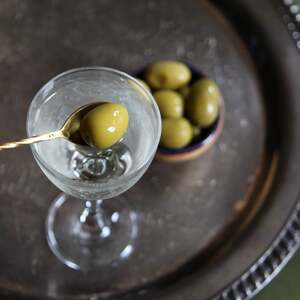
Dirty Vodka Martini
Ingredients
Equipment
Method
- Chill your martini glass by filling it with ice water or placing it in the freezer for at least 5 minutes.
- Add 3 oz. of vodka to a cocktail shaker.
- Add ½ oz. of dry vermouth to the shaker.
- Add ½–1 tsp. of Spanish olive brine to the shaker, adjusting to your preferred level of ‘dirtiness’.
- Fill the shaker completely with fresh ice cubes.
- Stir the mixture vigorously with a bar spoon for 20-30 seconds, until the shaker is well-frosted and the drink is thoroughly chilled.
- Discard the ice water from your chilled martini glass.
- Strain the chilled martini mixture directly into the prepared martini glass.
- Garnish with two or three Spanish olives, skewered on a cocktail pick if desired.
Notes
Read more about: Shaken Not Stirred: The Definitive Ranking of the 10 Great James Bond Movies That Defined a Legacy

7. **Long Island Iced Tea**The Long Island Iced Tea, a notorious powerhouse of various spirits, is a recurring fixture on bartenders’ “love to hate” lists. Its potency is undeniable, but it’s the sheer number of ingredients and the potential for over-serving that make it a challenge. ryleyh4f81e4f3c from the BuzzFeed Community bluntly states, “I enjoy making most drinks, but in my personal opinion, I feel that Long Islands are a garbage drink since you have to mix five different liquors.”
This cocktail is a veritable liquor cabinet in a glass, typically combining vodka, gin, rum, tequila, and triple sec, topped with a splash of cola. While the “Coke splash at the top” might make it “taste great no matter what” for the casual drinker, as Samantha Follows notes, the assembly line of multiple spirits is what creates the operational headache. Each pour requires precision and time, which accumulates quickly during busy hours.
The “complexity and risk of over-serving” are critical factors identified in the context for why bartenders dislike this drink. With so many different spirits in one glass, it’s easy for the alcohol content to add up rapidly, making it a drink that requires careful monitoring, especially in an environment where customer behavior can be unpredictable. This responsibility adds a layer of stress to the bartender’s job, as they are not just making a drink but also managing the potential consequences of its potent nature.
Furthermore, while it’s a popular choice for some patrons, its multi-liquor composition means that it occupies a significant portion of the bartender’s mental and physical bandwidth. It’s not a quick “pour and serve” item. Each bottle needs to be retrieved, measured, and poured, making it less efficient than a two or three-ingredient cocktail. It’s a classic for a reason, but its intricate recipe makes it a genuine “challenge” when the bar is bustling.
Bartenders really are the artists of the night, aren’t they? But just like any artist, they have their preferences, and some creations simply don’t spark joy when the pressure’s on. We’ve already peeled back the curtain on some notorious bar-stall baddies, and now we’re ready to dive deeper into even more customer favorites that can make a bartender sigh. From tricky flavor balances to cleaning nightmares and drinks that just don’t fit the vibe of the bar, get ready for another round of unfiltered truth!
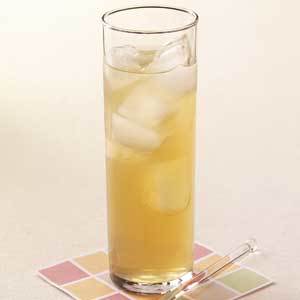
Long Island Iced Tea Recipe
Ingredients
Equipment
Method
- Fill a highball glass generously with fresh ice cubes.
- Measure and pour 1 ounce of vodka into the glass.
- Add 1/2 to 1 ounce of tequila, 1 ounce of light rum, and 1 ounce of triple sec.
- Pour in 1 ounce of sour mix.
- Gently stir all ingredients together with a bar spoon to combine thoroughly.
- Top the mixture with 1/2 ounce of cola.
- Garnish with a lemon wedge or slice, if desired, and serve immediately.
Notes
Read more about: From Rock Stars to Aviators: 14 Enduring Celebrity Disappearances That Still Puzzle Us Today
8. **Tequila Sunrise**This vibrant, layered cocktail, with its beautiful orange and red hues, might look like a dream in a glass, but for bartenders, it can quickly turn into a flavor-balancing nightmare. Timo Torner, founder of The Cocktail Society, points out that the Tequila Sunrise is notoriously “tough to get the balance of flavors right.” What looks simple — tequila, orange juice, and a grenadine sink — often hides a challenging pursuit of perfection.
He goes on to explain that “it’s almost impossible to make it actually really good following the standard recipe.” This isn’t just about personal preference; it’s a professional critique that speaks to the inherent difficulties in achieving a harmonious blend with the standard ingredients. The grenadine, meant to create that signature sunrise effect, can easily overpower or become cloyingly sweet if not handled just right.
For a bartender who takes pride in their craft, serving a drink they’re not entirely happy with can be a real buzzkill. Torner articulates this frustration perfectly, stating, “It is always a challenge to serve a drink of which I am not at all convinced of the quality.” It’s a battle between delivering what the customer wants and upholding their own high standards for taste and balance.
So, while that Instagram-worthy gradient is certainly appealing, the journey to creating a truly delicious Tequila Sunrise can often leave a bartender feeling less than sunny. It’s a constant tightrope walk between presentation and palate, making it a drink that many would rather not tackle, especially when the orders are flying in.
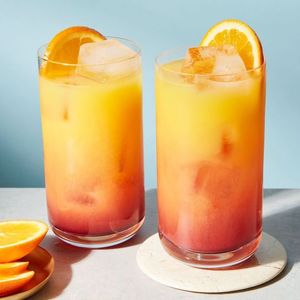
Tequila Sunrise
Ingredients
Equipment
Method
- Ensure all liquid ingredients, especially the orange juice and tequila, are thoroughly chilled before beginning to maintain optimal coldness and prevent dilution.
- Generously fill 6 highball or hurricane glasses with ice cubes.
- In a large pitcher, combine the chilled fresh orange juice and tequila. Stir gently to ensure they are well mixed.
- Carefully pour the orange juice and tequila mixture evenly into each of the prepared ice-filled glasses, filling them approximately two-thirds full.
- Slowly pour 1/6th of the total grenadine (roughly ½ teaspoon) down the inside edge of each glass. Allow it to settle at the bottom, creating the distinctive layered ‘sunrise’ effect without stirring.
- Prepare the orange slices by making a small cut to allow them to sit comfortably on the rim of each glass.
- Garnish each cocktail with a fresh orange slice before serving immediately.
Notes

9. **Whiskey Sour**Ah, the Whiskey Sour. A timeless classic that offers a beautiful balance of sweet, tart, and boozy, often with a delightful foamy top from an egg white. It’s truly a thing of beauty, but behind the bar, that egg white becomes the bane of existence for many. “It seems like anything with separating egg whites isn’t a favorite of your friendly barkeep,” the context humorously notes, and this drink perfectly illustrates why.
“During a busy bar service, making whiskey sours can be a hassle because of the time it takes to dry shake the cocktail and separate the egg whites,” explains Pape Konte, Bar Manager at The Standard, East Village in NYC. The “dry shake,” which involves shaking ingredients without ice to emulsify the egg white, is a crucial but time-consuming step. It’s an extra layer of effort that slows down service when speed is of the essence.
And let’s not forget the mess! As BuzzFeed community member beckyhocking1202 succinctly puts it, “Egg white gets EVERYWHERE.” Imagine trying to maintain a pristine, efficient workspace while dealing with sticky, slippery egg white residue during a bustling Friday night. It’s a quick recipe for a sticky situation and extra cleanup, further disrupting the flow.
Despite the operational headaches, Konte admits, “But the flavors make it well worth it!” This sentiment perfectly captures the bartender’s dilemma: they acknowledge the deliciousness and customer appeal, but the intricate, messy, and time-consuming preparation pushes it firmly onto their “hate list” during peak hours. It’s a labor of love that often feels more like labor than love.
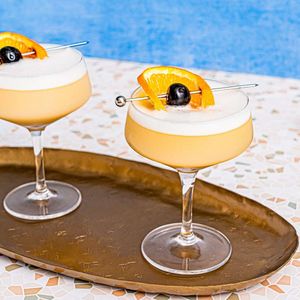
Simple Whiskey Sour Recipe
Ingredients
Equipment
Method
- Gather all ingredients and chill your serving glass.
- Measure 2 ounces of whiskey, 1 ounce of fresh lemon juice, and 1 teaspoon of sugar (or toasted sugar).
- If using an egg white, add it to the cocktail shaker with the lemon juice and sugar.
- Perform a ‘dry shake’ (shake vigorously without ice) for 15-20 seconds to emulsify the egg white, if using.
- Add the whiskey and ice to the shaker.
- Shake vigorously for 10-15 seconds until well-chilled.
- Strain the mixture into the chilled Old Fashioned glass filled with fresh ice.
- Garnish with a lemon twist or a cherry, if desired.
- Serve immediately and enjoy.
Notes
Read more about: Channing Tatum Unveils Kirsten Dunst’s Candid Charm and His ‘Roofman’ Transformation: A People Magazine Exclusive Look

10. **Chocolate Martini**Sweet drinks often divide opinions, but the Chocolate Martini seems to consistently land on the less-favorable side for many in the industry. Carolina Gonzalez, Beverage Manager/Mixologist for WoodWind in Chicago, explicitly states her general dislike for “high sugar content” in drinks like this one. While it might be a dessert in a glass for some, for bartenders, it’s a palate killer and a cleaning nightmare.
Gonzalez elaborates on her aversion, noting that an “overly sweetened palette, disallows a guest to enjoy or appreciate another cocktail after a chocolate martini.” This isn’t just about taste; it’s about a bartender’s desire for their guests to have a full, enjoyable cocktail experience. A drink that overloads the taste buds with sugar can effectively shut down the possibility of appreciating subsequent, more nuanced libations.
Beyond the sugar rush, there’s the aesthetic challenge and the subsequent cleanup. “Secondly, it is a nightmare to clean the chocolate swirl around the glass that guests enjoy in a traditional chocolate martini,” Gonzalez laments. That decorative swirl, so appealing to the eye, becomes a sticky, stubborn mess that adds precious minutes to the dishwashing process, especially after a busy shift.
Even with her personal disdain, Gonzalez ensures that if a Chocolate Martini is requested, she puts “her own spin on it!” This dedication highlights the professional integrity of a bartender; they might hate making it, but they’ll still strive to deliver a quality drink. Still, the underlying frustration with its sugar content and the sticky aftermath makes it a frequent eye-roller.
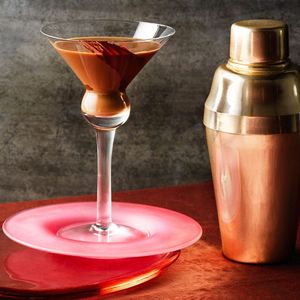
Chocolate martini
Ingredients
Equipment
Method
- Melt 1 tsp of chocolate using a double boiler or microwave until smooth.
- Swirl the melted chocolate around the inside of two chilled martini glasses to create a decorative rim, then set aside.
- Fill a cocktail shaker with a handful of ice.
- Add 50ml Irish cream liqueur, 50ml coffee liqueur, 1 tbsp chocolate syrup, and 100ml vodka to the shaker.
- Secure the lid tightly and shake vigorously for 15-20 seconds until the outside of the shaker is frosty.
- Strain the mixture from the shaker into the prepared martini glasses, ensuring no ice shards fall in.
- Serve immediately and enjoy your chocolate martini.
Notes
Read more about: Sip Smart, Spend Less: 8 Unbeatable Whiskeys Under $50 That Every Savvy Drinker Needs to Experience

11. **Espresso and Coffee Drinks**While the Espresso Martini has seen a massive resurgence in popularity, becoming a trendy staple, its rise has also solidified its place on many bartenders’ “dread lists.” Dee Broughton, a recipe developer and veteran bartender, has “strong opinions on caffeinated drinks,” especially “anything with coffee.” The problem isn’t the drink itself, but the operational chaos it creates.
Broughton recounts her extensive experience: “I’ve worked in many restaurants and bars and not one of them stocked coffee behind the bar.” This immediately flags the core issue: the ingredients aren’t readily available in the bartender’s usual workflow. To fulfill an order, it often means leaving the bar, interrupting service, and “go make a cup of coffee for one drink!” This significantly slows down the entire bar.
The context specifically highlights espresso cocktails as a major pain point. Think about a bustling bar environment where every second counts. Having to step away to pull an espresso shot or brew coffee is a huge disruption. It pulls the bartender away from shakers, ice wells, and direct customer interaction, creating a bottleneck for other orders.
So, while customers might enjoy that caffeinated kick, the “chore” and the logistical nightmare of preparing espresso and coffee-based drinks make them a serious source of frustration for bartenders. It’s a testament to how even a beloved drink can become a dreaded one due to practical, behind-the-bar considerations.
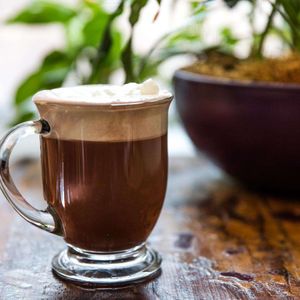
Barbajada (Milanese Hot Chocolate-Coffee Drink) Recipe
Ingredients
Equipment
Method
- In a medium saucepan, combine the cocoa powder and sugar.
- Add a small amount (about 1/4 cup) of the milk to the dry ingredients and whisk vigorously to form a smooth, lump-free paste.
- Gradually pour in the remaining milk, continuing to whisk until thoroughly combined.
- Place the saucepan over medium heat, continuously whisking the mixture to ensure the cocoa and sugar dissolve completely and the milk does not scorch. Heat until it reaches a gentle simmer, but do not allow it to boil.
- Remove the saucepan from the heat and stir in the strong coffee or espresso until fully incorporated.
- Taste the Barbajada and adjust sweetness if desired, adding a touch more sugar if needed.
- Carefully pour the hot Barbajada into individual serving mugs.
- Top each serving generously with a dollop of whipped cream.
- Optionally, garnish with a light dusting of cocoa powder or a few chocolate shavings for enhanced presentation and flavor.
- Serve immediately and enjoy the rich, harmonious flavors of this traditional Italian beverage.
Notes
Read more about: For Real, What’s Up? 15 Formerly Beloved American Eats That Have Quietly Disappeared from Our Plates

12. **White Russian**The White Russian, forever immortalized by “The Dude,” holds a special place in pop culture, but not always in the hearts of bartenders. It’s a creamy, indulgent drink that sounds simple enough, yet presents a unique set of challenges. Ben Potts, co-founder of Unfiltered Hospitality, admits, “While I enjoy consuming them, I’m not a huge fan of making White Russians.”
The primary culprit? The cream. Potts explains, “Dealing with cream of any kind can be somewhat challenging as it likes to coat things pretty effectively.” This “coating” isn’t just an aesthetic observation; it means extra effort in cleaning shakers, stirring spoons, and glasses. Sometimes, that coating quality is a “nice feature” in certain drinks, but often, it’s just “inconvenient” for busy bar staff.
There’s also a hygiene factor, particularly in certain environments. Katy Guest, an industry vet, recalls an incident at a nightclub at 2 a.m. where she refused a White Russian order. Her reasoning? “Who trusts dairy from a nightclub at 2 a.m.?” This highlights a bartender’s practical concern for ingredient freshness and customer well-being, especially when dealing with perishable items in less-than-ideal late-night conditions.
Ultimately, the White Russian, despite its cultural cachet and deliciousness, is a recurring source of minor operational headaches. From the extra cleaning required due to cream’s coating properties to the legitimate concerns about dairy quality in specific settings, it’s a drink that adds small, but cumulative, inconveniences to a bartender’s shift.
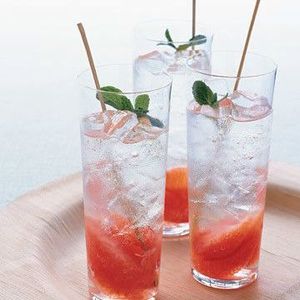
White Russian
Ingredients
Equipment
Method
- Gather all necessary ingredients: vodka, coffee liqueur, and heavy cream.
- Fill each of the eight rocks glasses with fresh ice cubes, ensuring they are well-chilled.
- In a separate mixing glass or pitcher, combine the measured vodka and coffee liqueur.
- Gently stir the vodka and coffee liqueur mixture with a bar spoon for about 15-20 seconds to thoroughly chill the spirits.
- Carefully pour the chilled vodka and coffee liqueur mixture from the mixing glass over the ice in each prepared rocks glass.
- For a layered effect, slowly pour the heavy cream over the back of a bar spoon into each glass, allowing it to gently float on top of the darker liquid.
- Alternatively, for a fully integrated drink, pour the cream directly into the glass and stir once or twice with the bar spoon to combine until a uniform light brown color is achieved.
- Serve the White Russian cocktails immediately to enjoy them at their optimal chilled temperature.
Notes
Read more about: Market Reconfiguration: Examining Why Leading EV Brands from 2023 Face New Pressures in 2024’s Evolving Landscape

13. **Bomb and Layered Drinks**If you’re looking to really test a bartender’s patience, try ordering a tray of bomb shots or intricately layered cocktails, especially for a large group. Paul Kushner, mixologist and CEO of MyBartender, openly dislikes making any “bomb” drinks, like the ever-popular Jägerbomb. These drinks, which involve dropping a shot glass into a larger chaser, come with a litany of issues that extend beyond mere preparation.
One significant gripe is the sheer waste and mess. As BuzzFeed community member vjones483 vividly describes regarding Irish Car Bombs, “They messed up my bar top when the shot got dropped in, and the thick residue in the glass afterwards mucked up my wash water too fast.” Not only do bomb drinks “use up twice the glassware,” as Kushner points out, but they create immediate, sticky messes that disrupt the bar’s cleanliness and workflow.
Layered cocktails, like the Pousse Café or B52, present a different kind of challenge, demanding precision and time. Kushner explains, “You not only have to pour each layer carefully to avoid breaking the surface tension, but you also need to remember the proper order of ingredients or it could turn into a muddy mess.” This delicate, slow process is diametrically opposed to the need for speed during a busy rush. Layered shots, in general, “take forever to get right!”
Adding insult to injury, these types of drinks “seem to always be ordered for large groups,” which often translates to “lower tips, in my experience, since the person buying tends to just round up the total instead of tipping a proper percentage,” according to Kushner. So, they’re messy, time-consuming, disrupt service, and often don’t even pay off financially for the extra effort. It’s a perfect storm of bartender frustrations.
Read more about: Culinary Compass 2025: Navigating the Next Wave of Food Trends from Fiery Flavors to Farm-to-Table Freshness
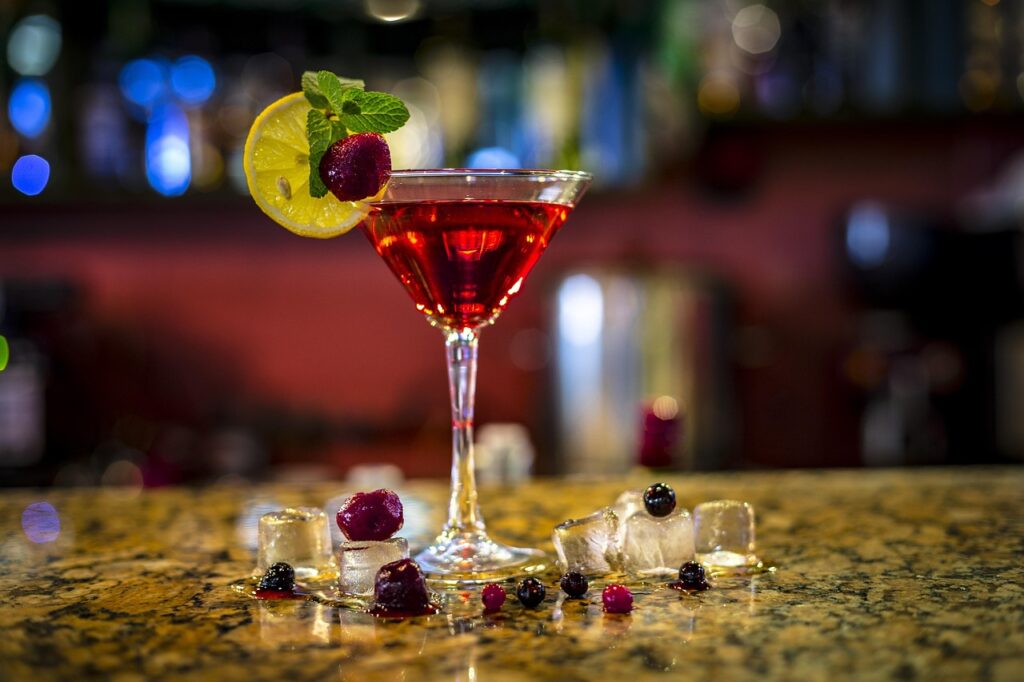
14. **Contextually Inappropriate Orders**Perhaps the most nuanced, yet consistently frustrating, category of orders for bartenders revolves around context. It’s not about the drink itself, but whether it fits the specific bar environment, the ingredients on hand, or the overall vibe the bartender is trying to cultivate. As Paul Kushner wisely states, “Context is truly key for cocktails!”
This principle is starkly evident when someone orders “fancy drinks at a dive bar.” A Reddit bartender gripes, “I work at a dive bar and it drives me bonkers when someone comes in and asks for a fancy martini.” Dive bars, by nature, have “limited ingredients” and are often not equipped for craft cocktails, leading to disappointment for the customer and frustration for the bartender who “won’t be happy with the end result anyway.”
Conversely, ordering overly simple drinks at a craft cocktail bar can also be a “bummer,” as Kushner notes when customers ask for a basic G&T. Mixologists take pride in their “signature cocktails or the creativity,” and a mundane order can feel like a missed opportunity to showcase their skill. Similarly, “Vodka Soda” is described by Sam and Stacy Greene as “quite possibly the most boring, flavorless, and mundane cocktail,” reflecting a mixologist’s despair over a lack of creative engagement. Even a “Vodka Martini” can be “the saddest, most embarrassing thing I have to make,” for Utah-based bartender Xania V. Woodman, struggling to make it look decent in a glass.
Finally, there are “off-menu orders.” Eric Trueheart, founder of Black Yeti Beverage, cautions that “if the bar is busy, bartenders hate making anything with more than three ingredients that’s not on the menu.” While classics are usually fine, overly complicated, non-standard requests become a time sink and a workflow disruption during peak hours. The advice is clear: “Save the complicated requests for when things calm down.”
So there you have it, folks! The unvarnished truth about the drinks that can turn your friendly neighborhood bartender into a silent grumbler. It’s rarely about the drink itself, but more about the dance of a busy bar, the tools at hand, and the sheer effort involved. The next time you’re out, armed with this insider knowledge, you might just be able to charm your way into becoming your bartender’s favorite customer. A little thoughtfulness, a dash of understanding, and a well-placed, appropriate order can go a long way in making their night (and yours) a whole lot smoother. Cheers to that!

